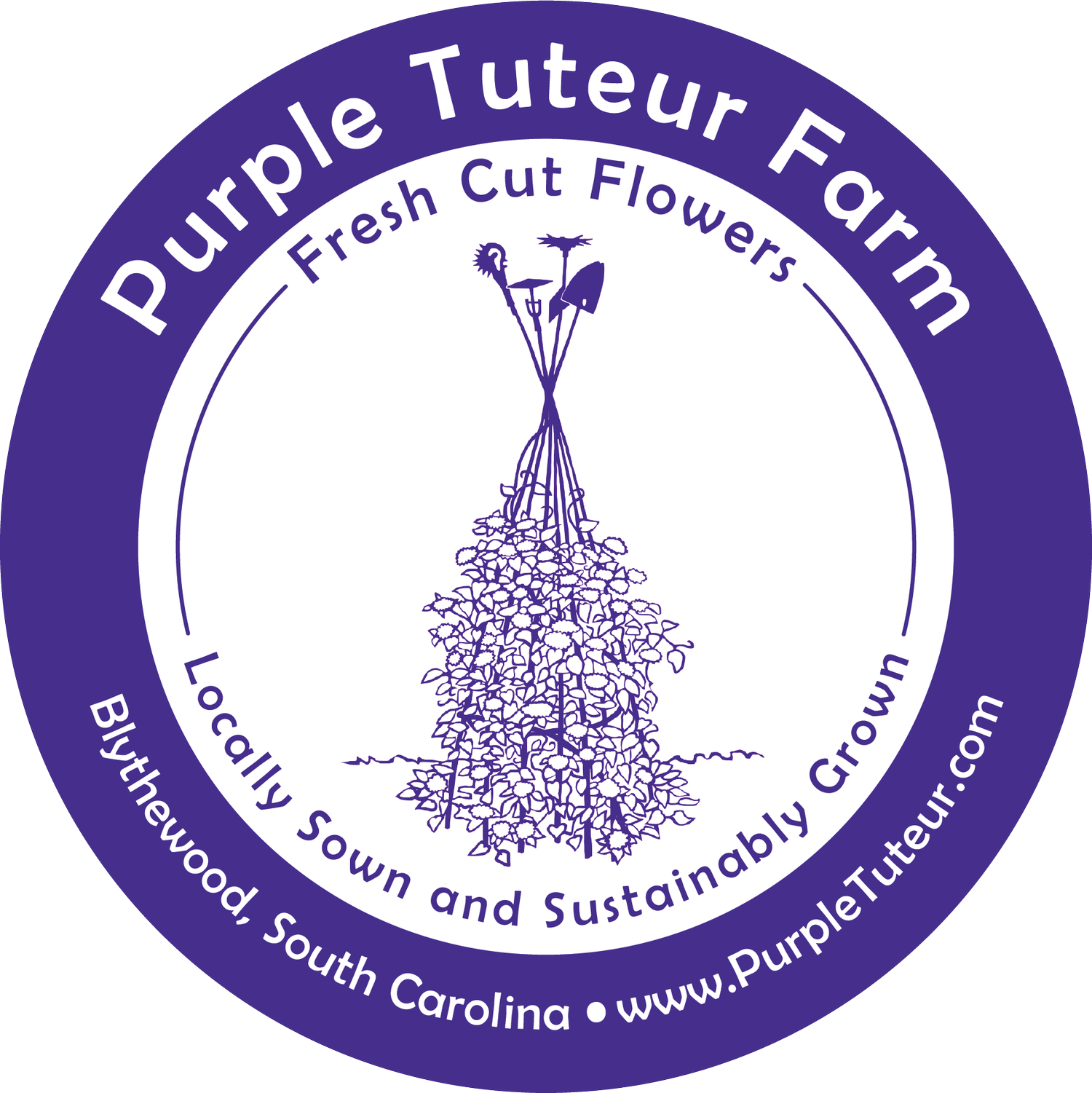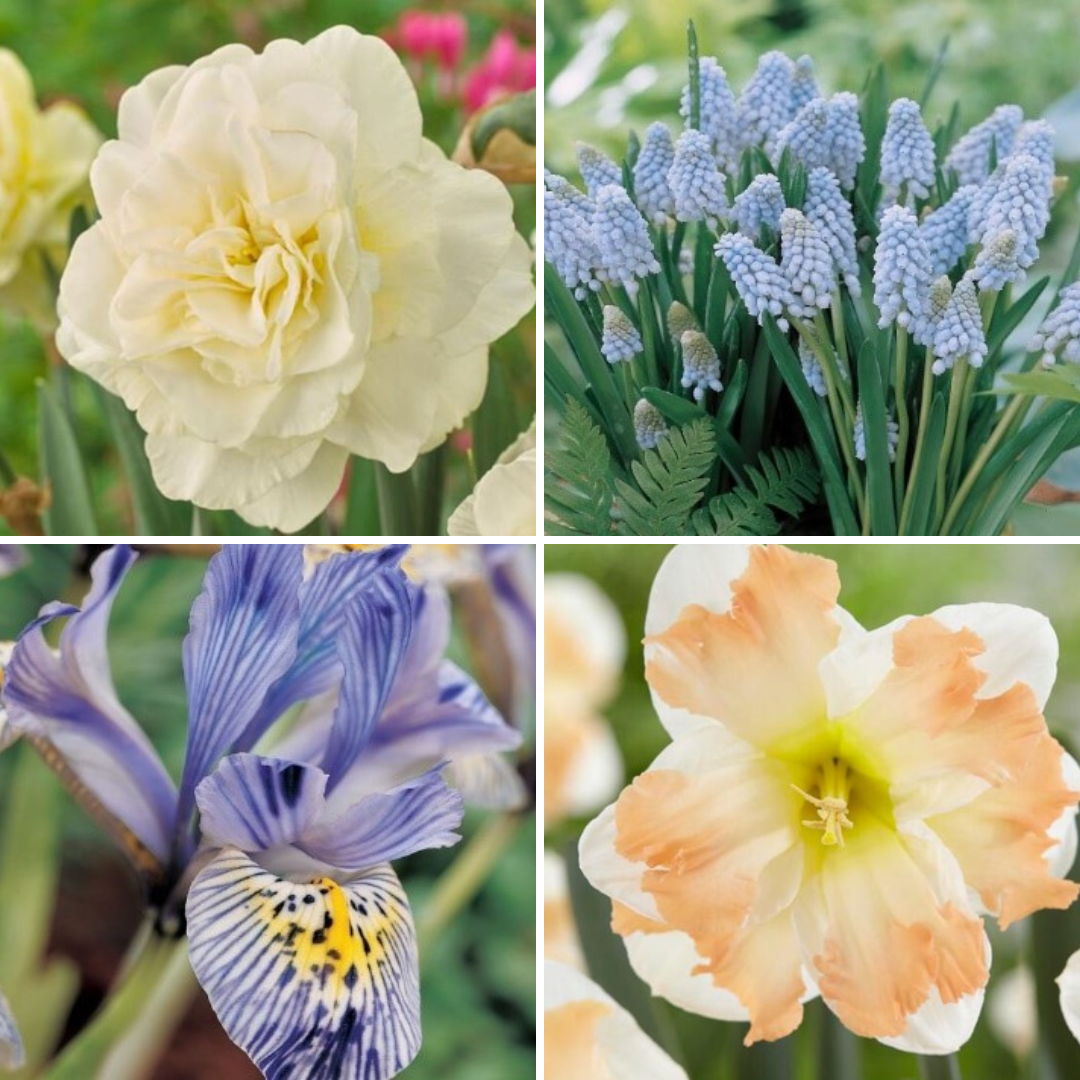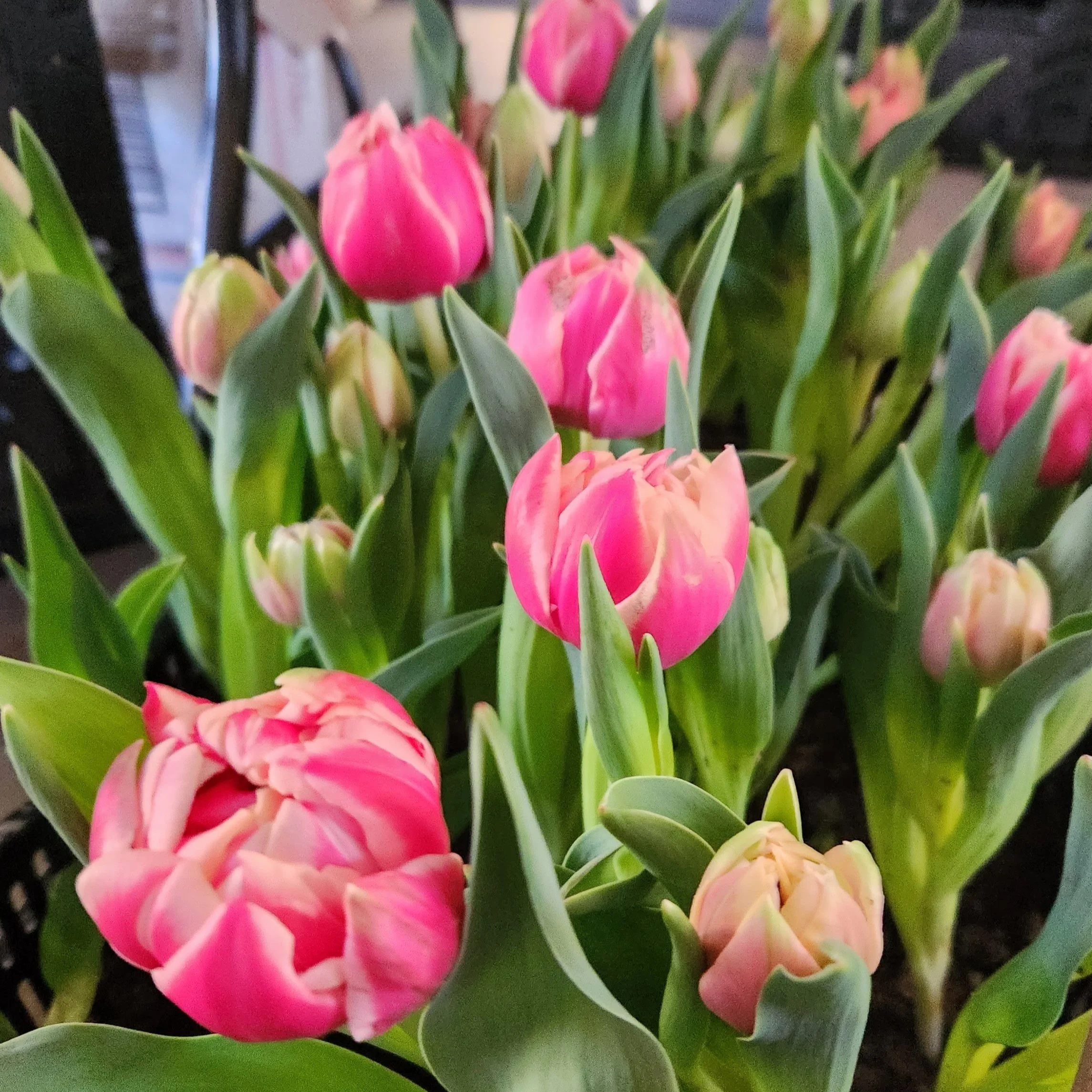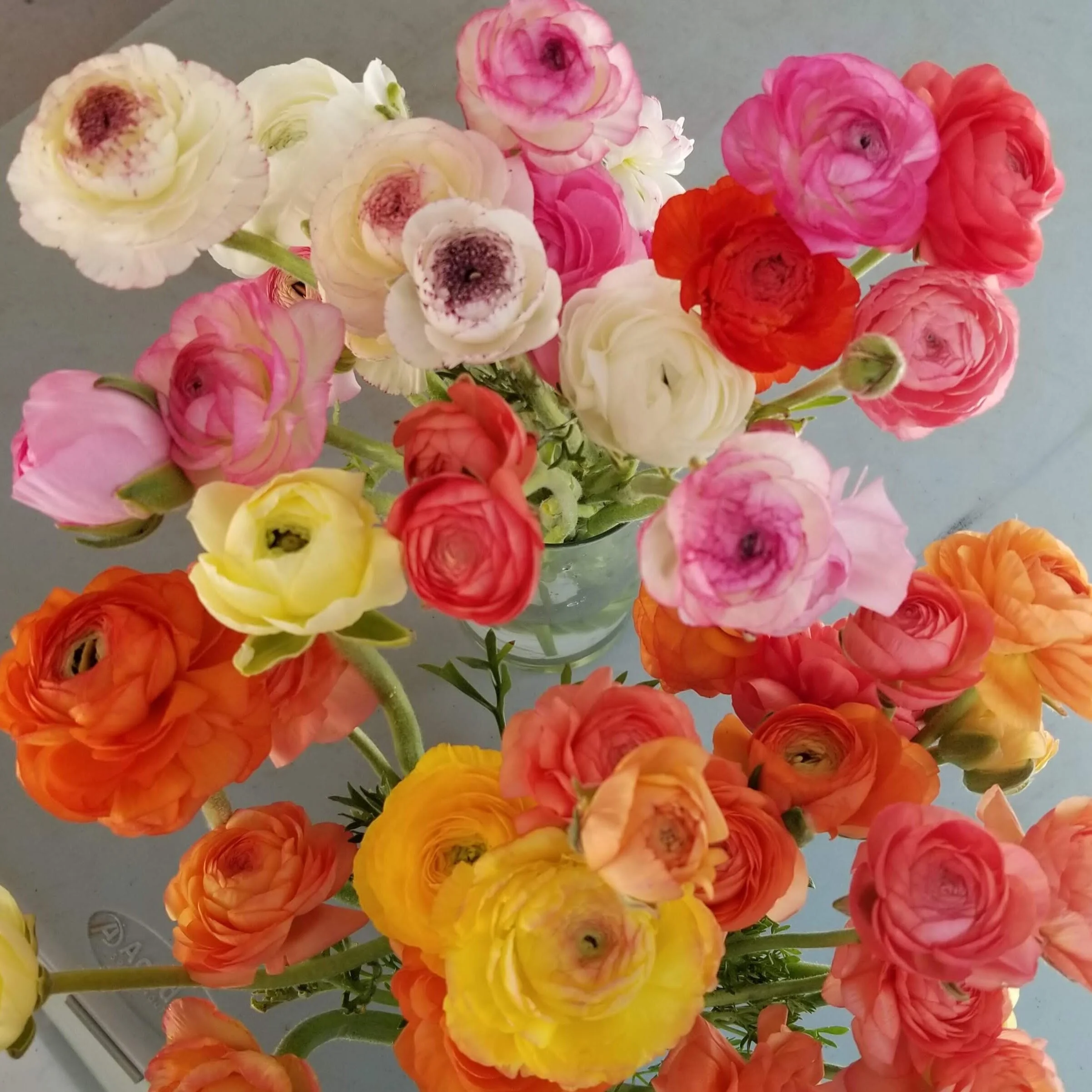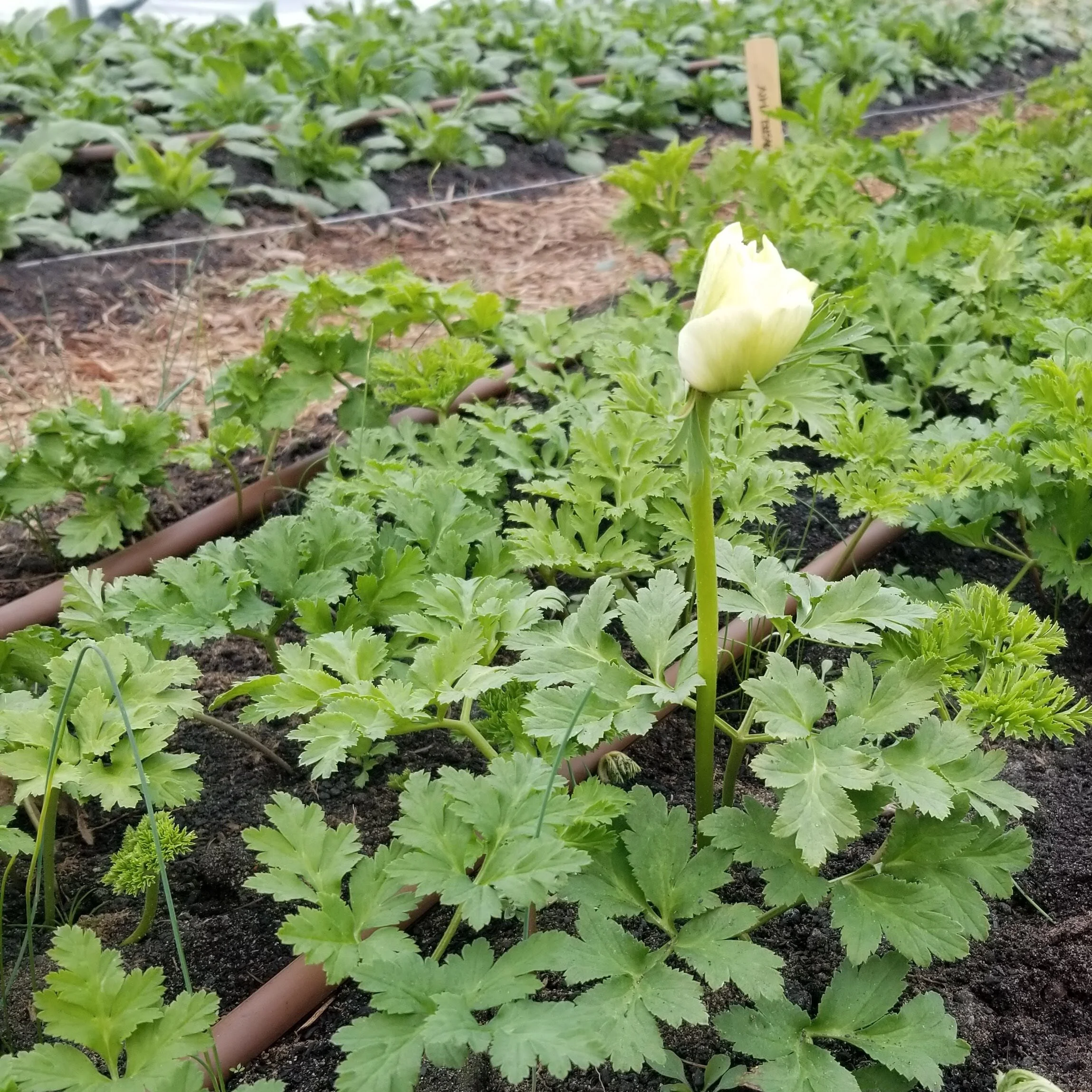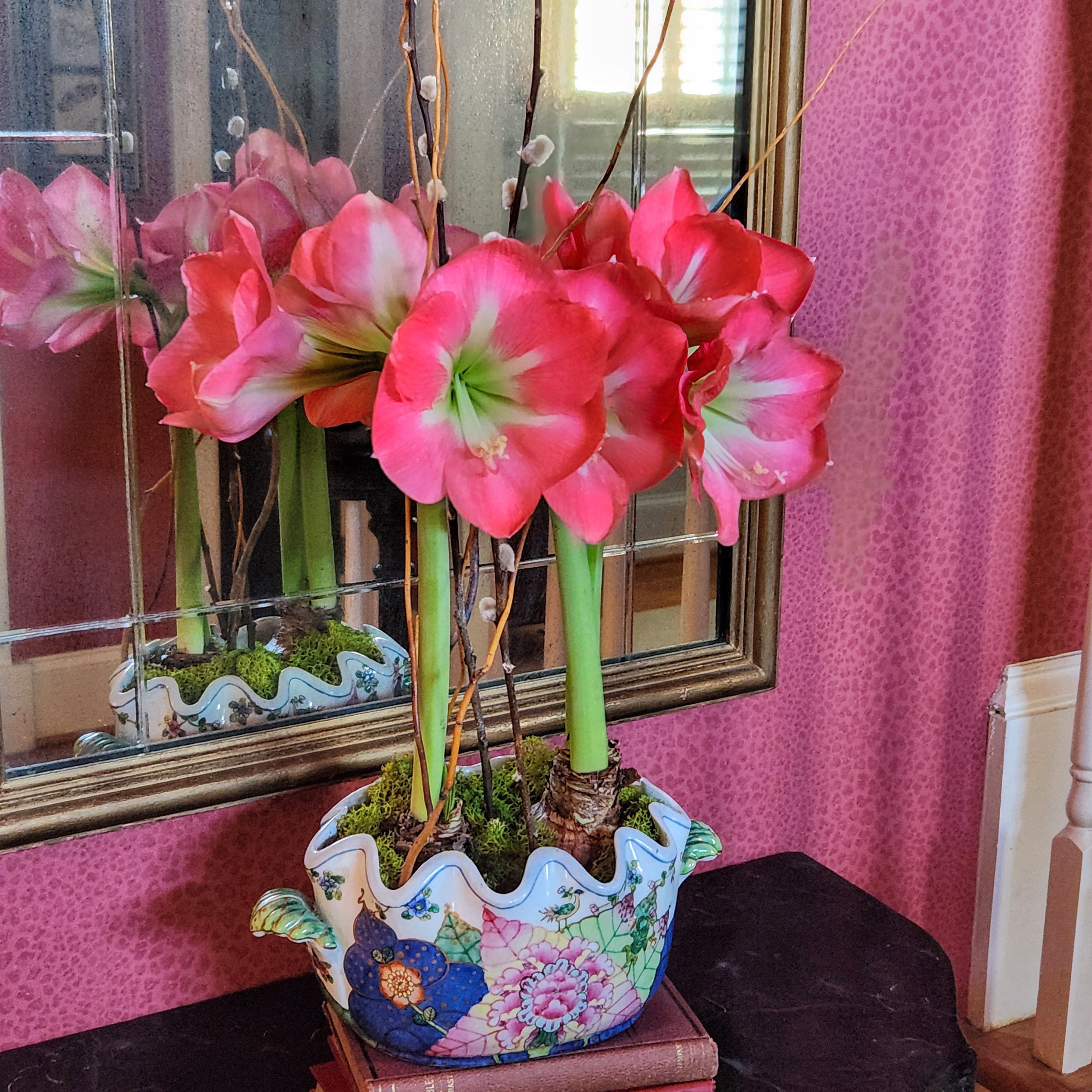
April On The Farm
We have been delivering our subscriptions for 5 weeks now and people who are unfamiliar with our services are always surprised to hear that we have flowers this early. Most of what is blooming now and in the next month or so is prepared in the fall. It is a more challenging way to grow, especially when we have late frosts or freezes, but worth it for the early blooms. There have been years when we lost crops to the late cold. We always plant extra in anticipation of a weather event.
This year, we have had a mild winter, meaning we haven’t had any severe cold snaps that can kill our crops. 4/15 is considered our last frost date. These dates are determined by historical records kept by NOAA (The National Oceanic and Atmospheric Administration). NOAA uses 30 years of historical data to project the last frost date in the spring and the first frost date in the fall. There is more to it, but not for today. We are just celebrating the fact that the forecast looks great for this week and frosty weather appears to be over!
Colibri Poppies
I got a question about the poppies in the subscription bouquets, so others may also be wondering too.
These are a type of Icelandic poppy, bred in Italy. We use a pastel mix for our early spring bouquets. It does come in a few brighter colors too. They need cold weather to grow, so we will probably only have them for another couple of weeks. You can see them in a few forms in our subscription bouquets. The flower forms in a pod and when it is ready to bloom, the pod cracks and falls off. We generally put them in bouquets at the cracked pod stage or when they have just opened.
Subscription Flowers for May and June
We’re just a couple of weeks away from wrapping this subscription season up. Then we’re on to the Spring to Early Summer season, which starts in early May. There is still time to sign up if you want to give this a try or add another season to your home deliveries. These also make great gifts, so if you are stumped for a Mother’s Day gift, a subscription could be the answer you are looking for. To find out more and to sign up, follow this link to our website.
https://www.purpletuteur.com/subscription-information
Ag and Art
Thank you for being part of our community. I hope you have marked June 8th and 9th on your calendars to come see the farm. That is the Richland County Ag&Art Tour weekend and we are a host farm for the event. The event is free to the public and lots of fun. We would love to see you! Hours are 9 am to 4 pm both days. More information here : https://www.agandarttour.com/richland
Best,
Linda
Would You Like to Visit The Farm This Year? Here’s How
We would love to see you at the farm for one of our scheduled classes or events. We will open up registration approximately 30 days before the class is held.
We’re kicking the year off with a new class on Forcing Bulbs and registration is now open! Here are the specifics.
Growing Bulbs Indoors For Winter Blooms – On Farm Workshop
Friday February 23 - 10 am to noon
If you like to keep flowers in your house, winter can be a challenge. It is too cold for cutting much from the garden. Fortunately, there is a wonderful alternative available by forcing bulbs. The world of bulbs offers a great variety of shapes and colors to delight you at home before spring arrives.
Once you have learned how to make this happen, you can unleash your creativity to create interesting pots of one or many varieties at home. Indoor bulb gardens bloom and trigger our endorphins at their very sight. Who doesn’t need a lift when the nights are still so long and the temperatures are low?
Come and join us for this workshop on how to prepare bulbs for indoor blooms. Forcing is a method of growing plants that makes or forces them to flower at a different time than they would under normal conditions. We will review the timetables for forcing various bulbs, discuss potting mixes, and storage options.
Select from the bulbs we have prepared and pot up your own bulb garden to take home. Selection choices include early Narcissus, Hyacinth and Iris. When the bulbs have bloomed out, plant them in your garden for blooms next year.
Workshop is limited to 7 people.
Current Classand event Schedule
We’ve added a new page to the website that shows the schedule for the year as it stands today. We will update it from time to time as the year unfolds and as a newsletter subscriber, you will be the first to know!
See the full schedule here: https://www.purpletuteur.com/aboutourclasses
Bouquet Subscriptions
Our bouquet subscription season kicks off in March. We have a few openings left for the Early Spring Season (March/April). If you would like to sign up or learn more, here is the link: https://www.purpletuteur.com/subscription-information
Spring is coming and there is so much to look forward to!
Best,
Linda
Spring Blooming Bulbs - Growing Tulips in the South
Double Early Columbus Tulip
Growing Tulips in the South
There is a trick to growing tulips in our warm Zone 8 climate. They need 10 – 14 weeks of chilly weather to prepare to bloom, which we just don’t get here. Fortunately, with a little special handling, you can be successful getting tulips to bloom at home.
Buying pre-chilled bulbs gives you a head start on the necessary chill time. Pre-chilled bulbs have been stored in a cooler for at least 6 weeks. The remaining 4 - 8 weeks can usually be accomplished naturally in our climate.
You can also buy tulip bulbs in the fall and leave them in a refrigerator for 8 – 10 weeks before you plant them, making sure to get rid of any soft or moldy bulbs. Planting them outside in early winter will give you enough natural chill time for spring blooms here. It also helps to plant them outside in a pot. The soil in a pot stays cooler than the ground.
Regarding care, tulips need a regular weekly drink of water, either from rain, irrigation or hand watering. If you keep them partially shaded, the stems will be longer than if you plant them in full sun. Sudden swings in temperature (like what we experience in February and March) will hurry the blooms along, and you may still have short stems.
Harvest the blooms when they are still closed but showing some color. Pull the entire plant up, bulb and all. Tulips are effectively annuals here, so no need to leave the bulb behind. Trim the bulb off and put it in your compost bin along with any leaves that you want to remove. Rinse off all visible dirt. Place the stems immediately in water.
Apricot Impression Tulip harvested with bulb on, barely showing color
Apricot Impression, a few days later, showing more color
When selecting a vase for your tulips, keep in mind that they will continue to elongate in the vase. Tulips are very sensitive to light and will bend toward it, so you may want to turn the vase occasionally to keep them more upright.
Happy growing,
Linda
These are Amaryllis and Delphinium
Doubling up now since the season is changing and soon many new flowers will be showing up in the bouquets!
This is Amaryllis
Amaryllis is something that most of us are familiar with for the Christmas holidays. At that time of year, they are most often red, white or a combination of both. Beyond the traditional, amaryllis come in many colors and some alternative flower shapes as well. They make an excellent, long lasting cut flower.
We grow them just as you do for the holidays: indoors in a warm climate. See our blog post on how to grow them here. This year for bouquet season, we have used hot pink, white, burgundy and red striped varieties. They also come in green, orange and yellow. We will probably try some of those as well in the future!
This is Delphinium
Delphinium is actually a whole genus of plants but what we use specifically is the Guardian variety. The colors are gorgeous shades of blue and white. We grow these from plugs (baby plants grown in a greenhouse) since they are difficult to germinate. As they require cooler temperatures to grow well, we plant these in the fall. They overwinter in the garden and break out into bloom in early spring.
There are other great varieties to grow. Belladonna has more of a spray growth habit and is also nice for cutting. Pacific Giant is the same shape as the Guardian but much taller. These are well suited for the back of the garden border where they add height and drama. Probably too tall for bouquets.
In some areas delphiniums are perennial but we treat them as annuals since they typically can’t make it through our “famously hot” summers. They are repeat bloomers, so when you cut them, cut close to the ground. The stems start off a little short and get longer with each cutting.
Our spring season subscriptions are winding down. If you missed them and want farm fresh flowers delivered to your home or business we still have openings for our spring to summer subscriptions. For more information, see our website at : https://www.purpletuteur.com/subscription-information
Happy flowering,
Linda
This is Ranunculus
Ranunculus (Anemone Coronaria) is commonly known as Buttercup. The corms (bulbs) come in yellow, orange, pink, red and white. Known as the “rose of spring”, the flower is shaped like a rose.
Ranunculus starts blooming in mid-March in Columbia. If you want to add them to your garden, they are a perfect partner to anemone. The growing conditions are the same. The ranunculus corms can survive our winters in the ground. They do best when the daytime temps are in the mid-60’s and the nights are in the 40’s. They will keep blooming until the daytime temps are consistently in the 70’s. After the heat comes on, they fade away until November or so. Then they green up and take up the sun until the March blooms appear.
Ranunculus blooms need protection from the rain. Each plant will bloom several times while in season, so even if a flower gets drenched, all is not lost. Just deadhead it and wait for the next one.
In addition to these there is a variety known as butterfly ranunculus. These are more of a spray form and the flowers have wax coated petals that give them a shimmer. They come in soft pinks, yellows and a pale salmon color (pictured). From Italy, these are fairly new to the United States. Only two wholesalers can distribute them here which makes them more expensive. We are growing some for the first time this year and experiencing some problems but still hopeful that some will make it into spring bouquets.
There is a proper time to cut every flower in order to maximize its vase life. For ranunculus, the right time is when the flower petals are barely open. When properly cut, they will last a good week in a vase.
What do you think of ranunculus?
Thanks to all of you who have ordered your subscriptions. Although the spring season is sold out, we still have some available for the spring to summer season. You can sign up on our website, www.purpletuteur.com.
As always, we appreciate all the love and support you show us here at our farm. It keeps us motivated to try and bring you the best and most beautiful blooms.
Many thanks,
Linda
This is Anemone
We are about a week away from getting enough blooms to begin delivery! Thanks to all who have signed up. We have just a couple of spots left for Friday delivery for the early spring season.
This is the first in a series of blogs introducing some of the flowers we grow.
Anemone (Anemone Coronaria) is a late winter/early spring bloomer for us in Columbia. The corms (bulbs) come in many colors and in single double flower forms. In addition to the longer stemmed varieties that we use for cut flowers, there are short-stemmed versions that are nice to have in the garden.
All types can survive our winters in the ground but the flowers don’t do well in the rain. If you don’t have time to be concerned about every bloom, you simply dead head those that have gotten wet. Otherwise, you can grow them under cover to protect them from our wet spring weather. Each plant will bloom several times while “in season”, so even if a flower gets drenched, all is not lost.
Anemone does best when the daytime temps are in the mid-60’s and the nights are in the 40’s. This translates to March for us. They will keep blooming until the daytime temps are consistently in the 70’s. After the heat comes on, they fade away until November or so. Then they green up and take up the sun until the March blooms.
There is a proper time to cut every flower in order to maximize its vase life. For Anemones, the right time is when the collar under the bloom is about a half an inch from the base of the bloom. They may wilt if you cut them sooner. When properly cut, they will last a good week in a vase.
If you are thinking that you knew of anemone as another flower, you are right. There is a shrub-like perennial called Japanese Anemone (Anemone hupehensis). The blooms look very similar to the bulb form but they bloom in a spray in the fall. This is why botanists revert to Latin names for flowers. Many common names apply to multiple plants but each has its own unique Latin name.
What do you think of this flower? Have you grown it? Is there another flower that you like to see this time of year?
I hope you are as excited for Spring as I am!
Best,
Linda
